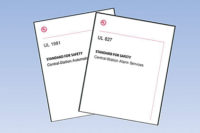Central station redundancy and its significance is essential to understand. A select group have maintained redundancy over the years, although UL hasn’t mandated redundancy until recently. Redundancy provides peace of mind to central station owners, dealers and subscribers, and is incredibly valuable when navigating through the effects of natural disasters.
A central station is composed of four major elements — human resources, computer automation, telecommunications and networking and connectivity. It is my belief that when a central station claims to have redundancy, the redundancy must consider all major elements. I have experienced claims of redundancy where a central station only maintains one of these elements. With the UL standard, central stations are required to have redundancy based upon their size (MEW Factor).
Some central stations structure a watered-down version of redundancy. Although this serves value, this is typically the offsite redundancy of servers and sometimes backup central station receivers. This does not offer all the redundancy of complete backup, but it does allow for the preservation of data and sometimes processing.
True redundancy is something that all large central stations must have. This is a structure where a central station maintains two or more hot redundant central stations in separate and distinct geographic areas. Maintaining central stations in different time zones also lends some additional value for management, as it allows for spreading the workload throughout the day. The best approach is for the central stations to be structured with identical systems. Most importantly, the automation and telecommunications should be structured where all central stations that are part of the redundant network would all work off the same systems, and are self-sensing and self-healing. This should be seamless and would still allow the operators to process from any of the locations. In a worst case scenario where a hurricane or earthquake takes place, signal processing and operator interaction is redirected without the loss of any signals.
Redundancy is an extremely important factor when considering a central station. You owe it to yourself and your customers to ask the direct and pointed questions when considering a new central station. Centers that offer true and complete redundancy are proud to explain the specifics of what they offer. Not only are these specifics important to you, they are also important to your subscribers, and this should be a part of your presentation when you are marketing and selling security systems to your market.


